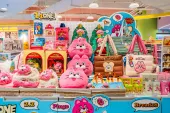Immersive visual experiences the key to in-store retail recovery
By Ta Loong GanAcross the globe, COVID-19 interrupted almost everything in the physical world with some activities and sectors saved only by digital. The technology players could bring new advantages and opportunities as business operations and client engagements all migrated successfully online. Inevitably, the retailers in mega malls and hospitality sectors faced the most significant challenges with numerous players either ceasing their operations or had to shift to a virtual alternative.
More than a year after the pandemic outbreak, the world has learned to pivot and adapt to the “new normal”. Several nations are on their way to recovery and are gradually loosening quarantine restrictions. It is imperative mega mall business owners seize the opportunity to build back better and attract mass visitors to not only bounce back from the disruption they faced but recoup the losses accumulated over the past 20 months.
Post pandemic pent-up demand for shopping
There is an undeniable pent-up demand from customers for the physical in-store experience recently. All around the world, the high street is making a huge comeback. Physical stores being the dominant channel for consumers even now, it is high time for shopping mall operators to ideate their future customer experiences and to develop robust, innovative and exciting post-pandemic strategies to attract traffic.
Online retail will continue to be a threat to traditional shopping even though we have seen a surge in physical shopping. Having grown accustomed to click-of-the-mouse convenience and price advantages, shoppers now have very different expectations for the real-world shopping experience. In addition to new deals and brands, consumers are looking for a more holistic and immersive in-store experience.
Engaging consumers through immersive experiences
Consumers are looking for an immersive, sensory-rich, performance-based experience from their in-store shopping. According to a recent study by Deloitte, mall owners need to re-look at the in-store environment as a stage where an immersive, interactive performance is on display, inviting consumers to participate.
Shoppers know what they want to buy and how much they’re willing to pay and more importantly the experience that they expect in the retail environment. Therefore, smart mall owners must be cognizant of the consumer engagement by integrating the online augmented reality experience with digital engagement at their physical in-store environment.
Regardless, it is a unique, unmissable opportunity to engage, build a relationship with the customer, enhance brand value and create lasting positive perceptions.
Smart mall owners respond to consumer behaviour
How should mall owners be doing this?
Create new, differentiated in-store environments that meet the needs of the post-pandemic shoppers. This includes the “normal customer” who just wants to grab, pay and run as well as the “explorer”, who is a ripe target for in-store sampling, demo stations, special offers and even videos.
In order to accommodate and engage larger numbers of visitors to their venues, mall operators have to think about the best ways to create an audio-visual sensory spectacle that appeals to a wider group of consumers. By way of learning mall operators need only to look at large scale performance and hospitality events, where technologies including multi-modal audio-visual presentations, such as projection mapping, have wowed audiences, taking their experience to the next level.
In short, technology can redefine the visual display or the façade from the static to an immersive kaleidoscope experience of images, colours and sounds to impress and wow. In these instances, technology creates a whole new world, different immersive experiences floor by floor, ultimately leaving a stronger imprint on their audience and ultimately pulling traffic.
Projection mapping growing steadily
Over the past years, we have seen significant interest and growth in projection mapping; a 3D video projection technique that utilises light and colours to project highly realistic and breathtaking images on irregular shapes and surfaces, including industrial sites, buildings, and even city landmarks.
Mall owners should spot the opportunity and rethink how this could change the game for the way they interact with and attract their audiences. This technology can grab and retain people’s attention and lure them. This impressive technique can bring buildings and objects to life, create immersive environments, and engage large audiences through memorable moments, even from a distance.
The mega mall industry is gearing up to emerge back stronger than before. On its way to recovery, the challenge is expected to be tougher for the operators, but exciting for consumers. At this point, the smart ones are those who are a step ahead in delivering to their customer audiences the best forms of entertainment and experience, fundamentally leaving them always wanting more.




















 Advertise
Advertise






